Every February, a few dozen recent graduate students from across the country make their way to Washington, D.C., to get firsthand experience working in the federal government. Though each takes on a different role in an executive agency or a Congressional office, these Knauss fellows share a common goal: to use their fellowship year to better understand and advance national policy for the oceans, coasts, and Great Lakes. This year marks the 40th anniversary of the fellowship, with 66 Knauss fellows starting their placements this month. As the new class of 2019 arrives, Lauren Gibson of the Knauss class of 2018 reflects on her year working in NOAA’s Office of Education.
On Monday, I took the elevator down to the first floor of the Herbert C. Hoover Building in Washington, D.C., to welcome our new Knauss fellow to NOAA’s Office of Education. As the elevator slowly descended five floors, I thought back to my own first day with the office and all that had happened between then and now. It’s difficult to put a year’s worth of experiences into words, so instead, here are some numbers.
Number of grant applications reviewed: 237
Just an hour into my first day as a fellow, I was whisked into a staff training on how to review grant applications for the Environmental Literacy Program. The program, which funds projects that increase resilience through community education, had just received a whopping 237 proposals. I had the opportunity to sit on the office’s review team and see the thoughtful step-by-step federal grant selection process. Later in the year, I visited multiple grantees to see NOAA-funded projects in action. I was struck by how deeply embedded in their communities each one of the grantees was. Partnering with organizations like these, NOAA can reach remote and traditionally underserved communities in ways that best fit their specific needs.
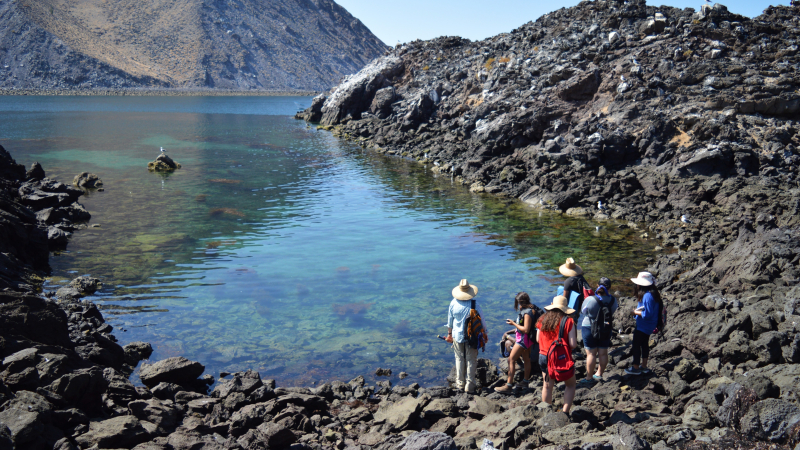
Number of Congressional briefings staffed: 12
Each spring, NOAA Education director Louisa Koch visits Capitol Hill to brief various Congressional offices about the work that we do. We met with a record 12 offices this year, showing each the impact that NOAA Education has in their particular state or district. Using my graduate school communication training, I helped to restructure and prepare the materials so that they moved beyond generalized program descriptions to tell compelling personal impact stories. I also attended each of the briefings alongside our director.
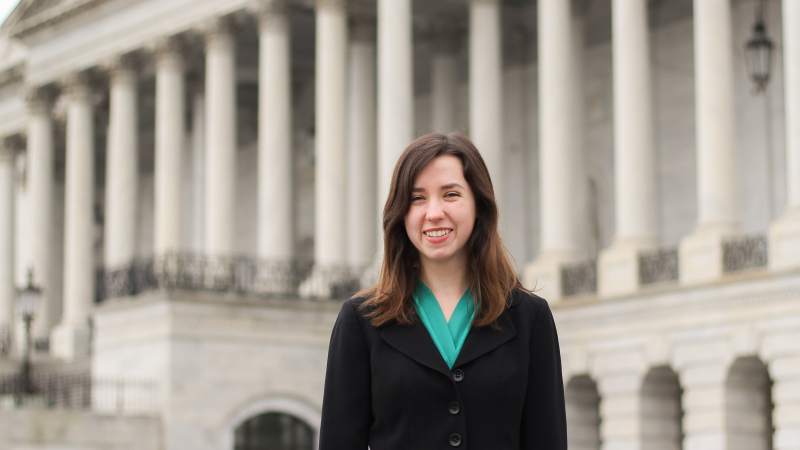
Number of conferences attended: 8
Because the Knauss program actively encourages and supports professional development, I had the opportunity to attend eight conferences this year, presenting at nearly all of them. The conferences, which spanned six states and two foreign countries, gave me a taste of just how wide-reaching NOAA and NOAA’s partners are. Everywhere I went, people told me about how they use NOAA tools either in their jobs or in their personal lives. There were surfers in California that used NOAA tide data to pinpoint optimal surfing times. There were educators in Connecticut who raved about the NOAA Education online teaching resources. I even ran into a 2017 Knauss fellow at a conference in Trinidad! With each interaction, I saw a different aspect of NOAA’s impact on the world and took even more pride in putting on my NOAA lapel pin the next day.
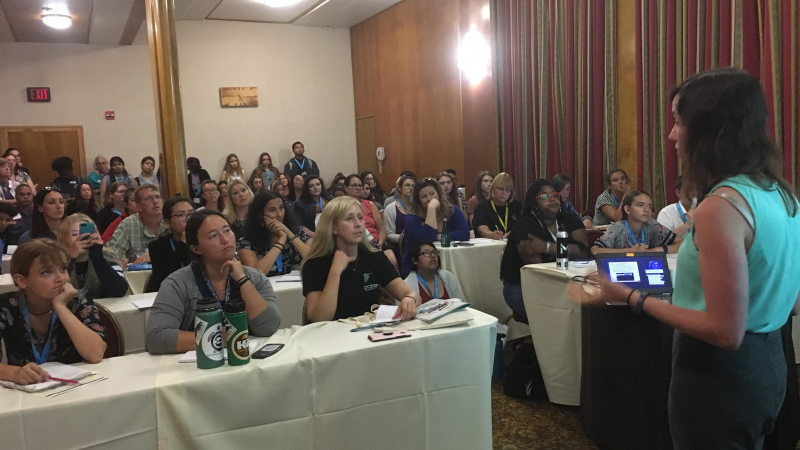
Number of people reached through volunteer activities: 715
Through formal events run by my host office and independent opportunities organized by my Knauss class, I took part in a over a dozen volunteer outreach events during my fellowship year. They ranged from leading a small preschool class in a hands-on lesson about whales to presenting about ocean-human interconnectedness at the largest science festival in the nation. Through all of these events, I was able to share exciting NOAA science with over 715 people. Each event was both energizing and grounding. Looking out into the audience to see a person’s face light up as I posed a question or explained a concept reminded me of the power of education and kept me motivated through any work challenges I faced.
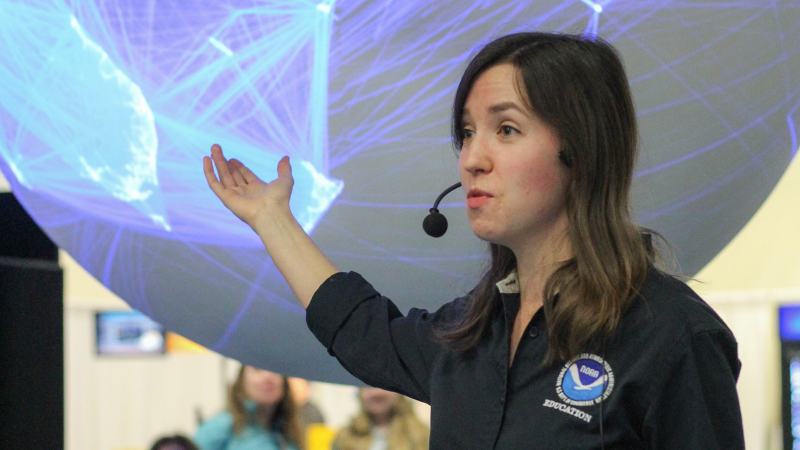
Number of new connections made: Countless
During Knauss fellow orientation, the National Sea Grant Office told our class that this fellowship would build our network more than we could imagine. They were right. Not only have I made professional connections throughout all of the NOAA line offices, but I have also met and bonded with many NOAA partners across the country. The fellowship also gave me 60 classmates with whom to experience a year of ups and downs; these are the brilliant, gritty, passionate people that inspire me to keep working in this field, and I am proud to call them my friends.
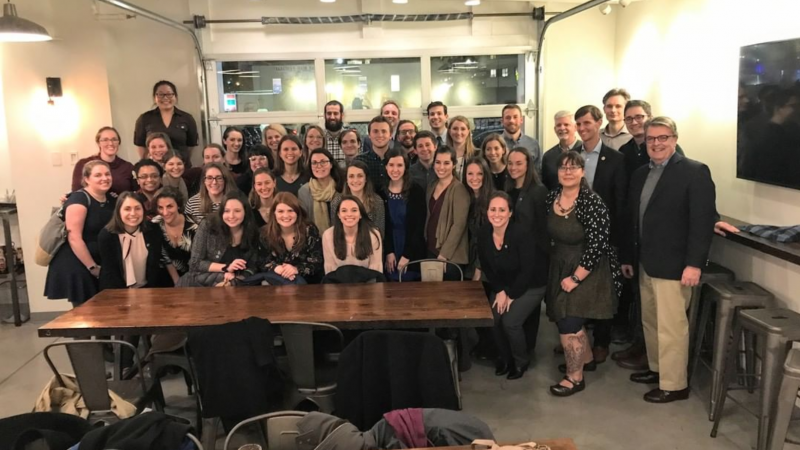
As the elevator chimed to a stop at the first floor of my office building, the doors opened to reveal an excited new fellow smiling back at me. I can’t wait to see all that she accomplishes this year.
Lauren Gibson was a 2018 Knauss fellow from California Sea Grant offsite link. She now supports NOAA’s Office of Education as a communications specialist with TechGlobal, Inc.
The John A. Knauss Fellowship is administered by the National Sea Grant College Program. If you are a current graduate student with an interest in ocean, coastal, and Great Lakes resources and policy, you can apply to your state Sea Grant program by February 22 to be considered for the Knauss fellowship class of 2020. Visit Sea Grant for more information on how to apply.

